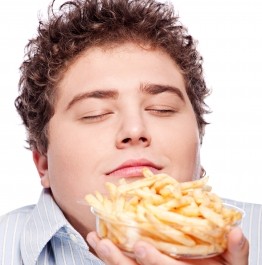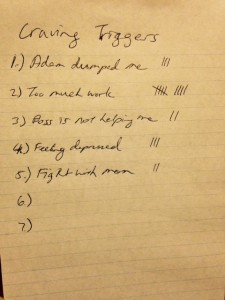5 Essential Tips to Curb Emotional Eating

You know that you aren’t hungry… after all, you’ve eaten your regular meals, but you are craving your favorite snack again. Maybe it’s in the middle of the afternoon, or more commonly late at night.
Why do we have these cravings, and what can we do to stop our emotional eating?
Have you noticed that we are more prone to giving into these cravings when you are stressed or late at night? Why? Because that is when our willpower is weakest. Willpower is limited, and if we are using it all day to effectively deal with existing stresses, then we will have less of it to resist those cravings. But there are tricks we can do to maximize our willpower and minimize our emotional eating habits.
What are the tricks to curb our emotional eating habits?
1. Get enough sleep.
Your cravings for high caloric dense foods goes up with lack of sleep. Ghrenlin is the hormone that stimulates appetite, and leptin suppresses it. Lack of sleep makes ghrenlin levels go up, and leptin go down.
Chronic lack of sleep increases belly fat and risk of type 2 diabetes, and also makes it harder to lose weight as well.
2. Pay attention to your environmental triggers
If seeing or smelling a food increases your likelihood of consumption of that food, then don’t let it be easily accessible.

Pay attention to portion sizes
People have a tendency to finish what is on their plates. So pay attention to portion sizes. Know that in America, our portion sizes have been supersized in the last few decades, and this has made a huge impact on obesity rates in the US.
So if you have a weakness for specific foods, for example like Oreos, pre-determine the ideal number that would be acceptable to you, and only serve yourself that amount.
Your eating can easily influenced by the people who you surround yourself with. If you find yourself eating more, or eating less healthy foods around specific people, put a specific action plan in place to avoid overeating. You might suggest doing different activities, you might bring healthier foods to snack on, or you might want to limit the amount of time you spend with that person.
3. Eat small portions mindfully.
![[URL=http://media.photobucket.com/user/Scene_Queen2/media/Cookie-Monster-cookie-monster-35123.jpg.html][IMG]http://i1010.photobucket.com/albums/af226/Scene_Queen2/Cookie-Monster-cookie-monster-35123.jpg[/IMG][/URL]](/wp-content/uploads/2015/12/Cookie-Monster-cookie-monster-35123-e1448958279334-278x300.jpg)
Cookie monster now endorse cookies as a “sometime food”
One only needs to eat a tiny portion to satisfy a craving if you eat mindfully.
What does it mean to eat mindfully?
It means eat slowly, and concentrate completely on the experience of eating. Eliminate all distractions, and stay completely in the moment. Notice the sensations in your mouth, your chewing, the texture, the smell and the taste. By doing so, you’ve given your body the full experience it has been craving. You’ll find that by doing so, you often won’t have a need for more than a couple of bites!
4. Identify the internal triggers of emotional eating.

Document your triggers for emotional eating
If you find that you are forgoing the mindful eating habit, or letting your cravings get the better of you, then its time to stock of the deeper reasons for self-sabotage.
We often engage in self-destructive behaviors to release stress, or to unconsciously punish ourselves if we don’t think we are worthy of love or care. We could be trying to sooth ourselves from emotional pain, if we’ve felt abandoned, rejected, loneliness, or betrayal. Sometimes we see food as our only reward and source of happiness.
Its time to take stock of what is going on in our minds when we are triggered. Write down a list to attach to your fridge. Include room to add to the list. Then make check marks next to your trigger item when you notice a craving.
5. Release the internal triggers.
Regardless of what is on your list, you may not have control over what happens to you, but your response depends on your perspective of the situation.
For example, if Heather gets dumped by her boyfriend, she might have some grief, but if she feels lovable, she’ll know there are better men out there. If Sally on the other hand gets dumped, she might take it much more personally, and put a lot of effort into trying to win him back. Our individual responses to a situation are based on our history, our version of the truth, and our currently reality. And we can change our current reality by changing our perspective. Here are more examples of how our thoughts can change how we respond.
So how to we release those internal triggers? My favorite strategies are Emotional Freedom Technique, the Emotion Code and the Body Code. Using the Body Code, I can help you directly identify the triggers that induce emotional eating and release them. If you would like to learn more, listen to my interview Releasing Subconscious Barriers, the Key to Health and Happiness, and give me a call at 1855 ENERJOY to schedule a complimentary consultation.
What are your triggers for emotional eating? Please share in the comments below!
*”Chubby Man With French Fries” courtesy of marin at FreeDigitalPhotos.net



